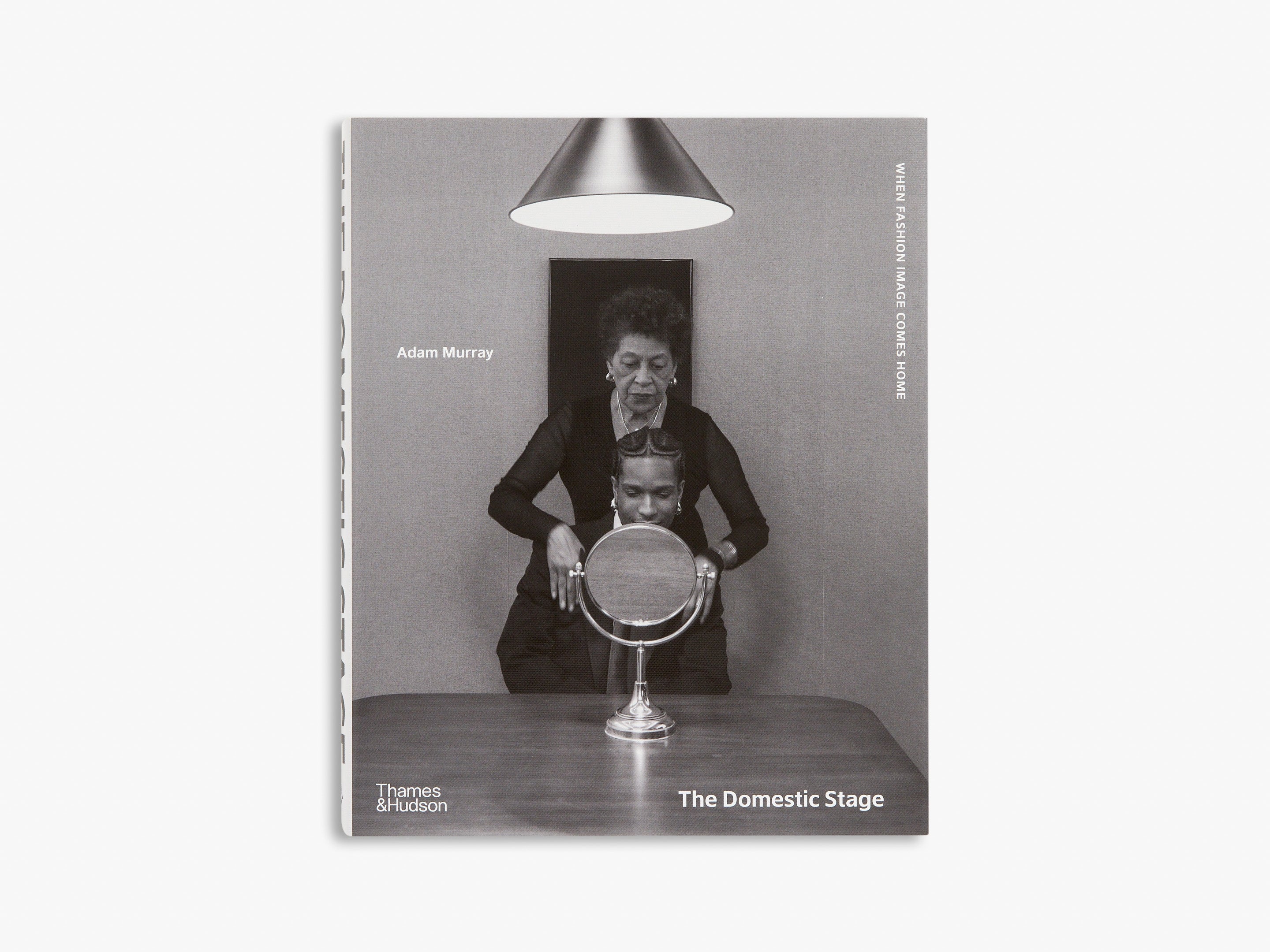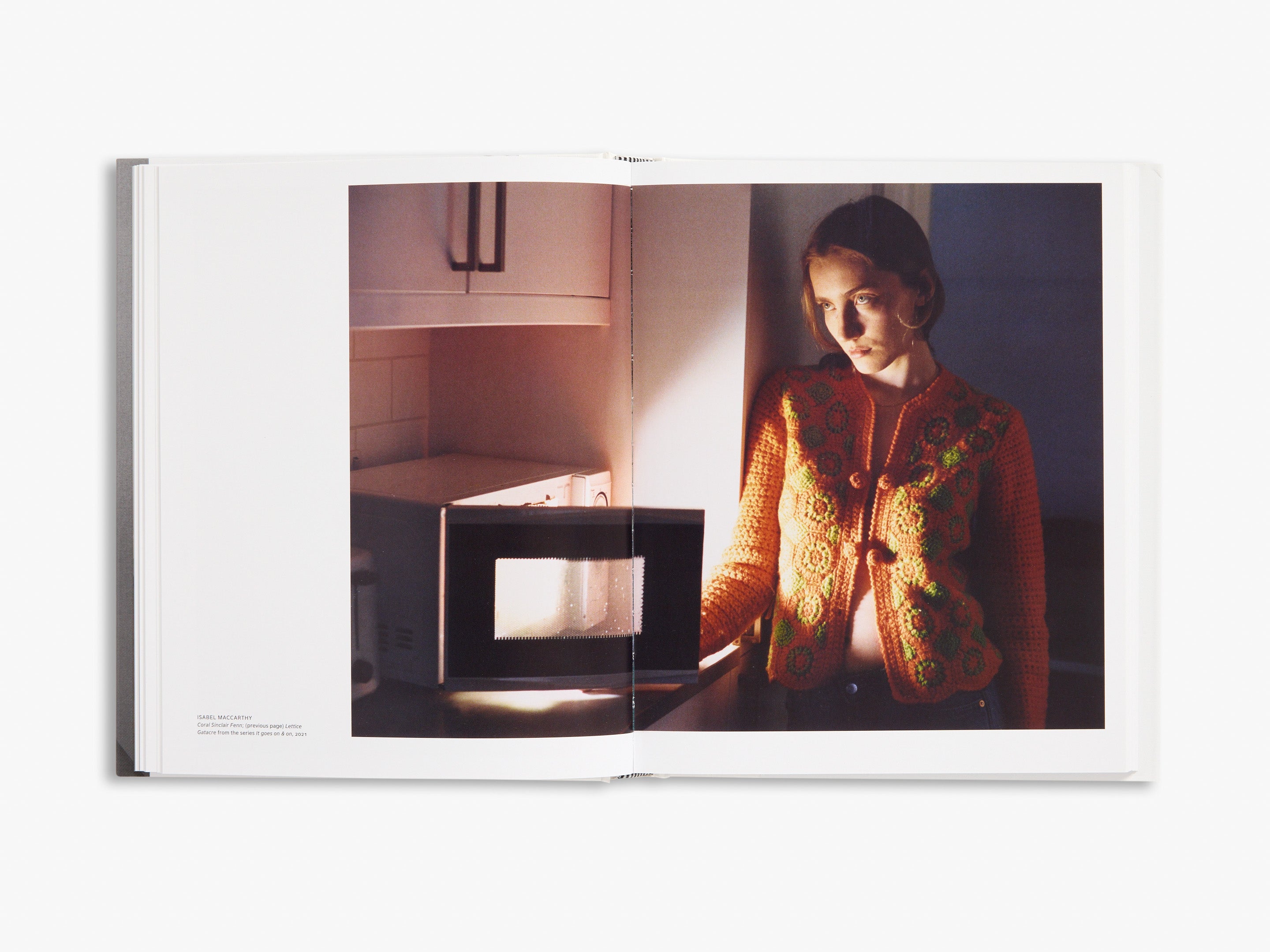© Sarah Jones. Assistant Photographer: Marc Pavey. Stylist: Cathy Kasterine. Assistant Stylist: Vanessa Rubio. Make-up: Mary-Jane Frost for Aveda. Hair: Adam Bryant for Toni&Guy. Parallel Lives, Vogue Hommes International, Spring/Summer 1999
Historically, the fashion image has focused on two primary spaces: the studio, a controlled environment in which aspirational ideals were created, and the street, where those ideals were put into practice. In recent decades, a third space has emerged, introducing a provocative new take on fashion photography. Shifting away from high-end shoots, the fashion image has moved toward the idiosyncratic, Instagram-style practice of pictures taken at home. That home may be a house, apartment or room – often, though not always, the antithesis of glamour and gloss.
In The Domestic Stage, Adam Murray presents a bold exploration of the role of the domestic interior in fashion photography, looking at the home as an 'uncurated' space. Those behind the camera come from very different places, but all celebrate a sense of inventiveness and empowerment from working in the domestic space. Illustrated with the work of twenty-two pioneering image-makers – including Nigel Shafran, International Magic and Carrie Mae Weems – The Domestic Stage revels in this new space as it merges with the fashion image.
In this extract from the book, Murray explores some of the key moments that have contributed to the role of the home in contemporary culture shifting from a private space into a public stage.

From left to right: © Estate of Corinne Day. Untitled (Kate Moss), British Vogue, June, 1993 / © Nigel Shafran. Thanks to Anna Cockburn. Patrick Vieira, Football Legionnaires, Vogue Hommes International, Spring/Summer 1998
When considering the relationship between fashion and domestic space, an apparent contradiction occurs. Clothing is our primary form of nonverbal communication; therefore, we want to use it in spaces where there will be an audience – the street, the workplace, the nightclub. The home is traditionally a private space where we can break from the performance of daily life, we can wear whatever we like without the pressures of an audience, and the power of fashion appears to become redundant.
But to think of fashion as just clothing is too limited. Fashion is a culture and industry that is sustained through notions of identity and lifestyle. When we purchase a product, only a fraction of the reason for that purchase is the function. Generally, our decisions are informed by what that product means. This concept extends beyond clothing into all aspects of our lives; fashion has a role in the fundamental ideas of who we are. This is then manifested across different modes of expression: in the things we buy, the clothes we wear, how we decorate our homes, even what we eat.

© Sarah Jones. Sittings Editor: Camilla Nickerson. Hair: Recine. Make-up: Frank B for The Wall Group. Kathy Hilton and her daughters, Nicky and Paris, from ‘American Beauties’, American Vogue, February 2000
If we accept that we generally use fashion to communicate to an audience, then it makes sense that we want this audience to see all the choices we have made in our lives. The communication of this has power.
Celebrities and their publicity teams were not the first to recognize the power of communicating lifestyle. This is evident in the commissioned portraiture of royalty and high society of centuries past, but modern celebrities were the first to have the means to do this on a massive scale, in collaboration with fashion print media, such as Vogue and Harper‘s Bazaar. Articles showcasing celebrities in their homes became commonplace, offering voyeuristic intrigue to readers and an opportunity to build myth and identity for the subject. The home essentially became the stage to communicate identity, status and taste.
The role of the home in contemporary culture has largely remained the same: it is an extension of who we are. The major shift has been about who has the power to communicate this to an audience, since the development of reality television and social media means that we now have the tools to communicate this ourselves.

© Carrie Mae Weems. Courtesy of the artist and Gladstone Gallery, New York, Fraenkel Gallery, San Francisco, and Galerie Barbara Thumm, Berlin. Untitled (Woman and Daughter with Make Up), from the Kitchen Table Series, 1990
In 2000, the first episode of MTV Cribs was broadcast in the United States, presenting audiences with a tour of the private homes of mostly American-based, high-profile musicians, actors and sportspeople. Each documentary-style episode was hosted by the celebrity as they showed off their houses, cars and interior design choices. Incidentally, it later transpired that a few of the episodes were not actually filmed in the homes of the celebrities and that items had been borrowed for the show.
This format has now proliferated with the development of online platforms such as YouTube, and popular channels such as Architectural Digest, which evolved from the consumer print magazine title. A vast number of interior-focused magazines also exist, catering to most tastes and lifestyles, including Homes and Gardens and Good Housekeeping, alongside more directional titles, such as World of Interiors, Nest and Apartamento. This increasing need for online and print content has meant that what was once reserved for the ultra-wealthy or A-list celebrity is now more diverse in its featured subjects.

© Sahil Babbar. The Reflection, New Delhi, India, 2018
Also in 2000, the UK edition of Big Brother was first aired, presenting audiences with a 24/7 live stream of the lives of ‘ordinary’ people in a TV studio ‘house’ rigged with multiple cameras. This was widely acknowledged as the origin of the reality TV genre, and audiences are now able to watch shows that follow the lives of people with a lot of the action taking place in the home. The most famous and culturally significant of these shows is Keeping Up with the Kardashians, first broadcast in 2007 and still in production today. In this instance, the home and the decisions made in the presentation of this space are key components of an aspirational lifestyle. Released in 2024, the Balenciaga Closet campaign was photographed by Inez & Vinoodh in the closets of a series of tastemakers, including Kim Kardashian. The closet room has become synonymous with wealth and luxury, an entire room in a house dedicated to displaying a coveted personal fashion archive.
All this has converged to make communicating our daily lives an aspirational choice, and since the launch of the first iPhone in 2007, we now have the technology to do this, usurping the gatekeepers that are magazine editors and TV producers. The obsession with showing off our lives on Facebook, Instagram and TikTok has ushered in the post-privacy age.
Words by Adam Murray.
The Domestic Stage is available now.








